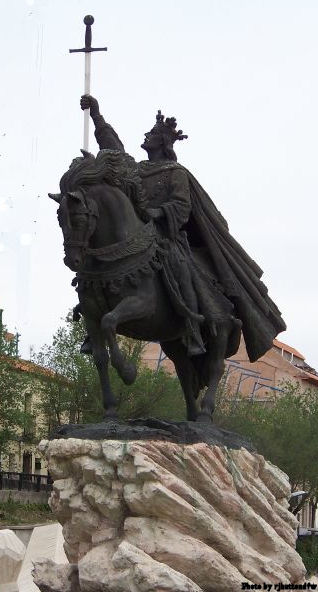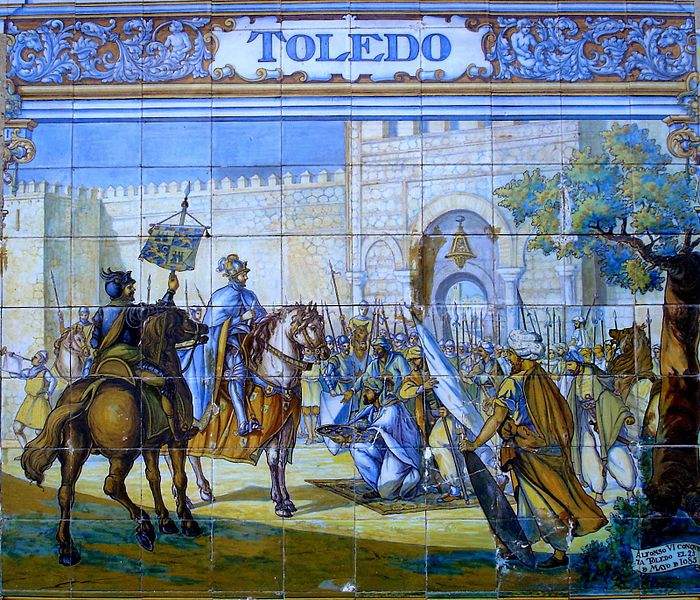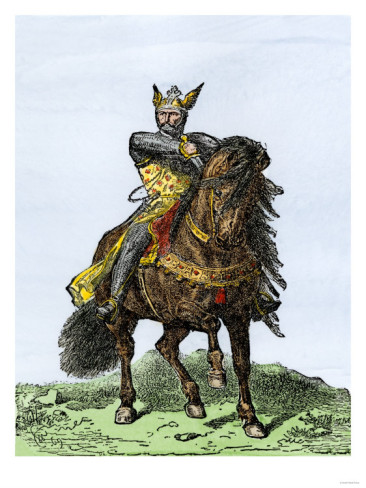
Thus the Cid returned from the land of the Moors and from his exile to Castile. The king received him with many honors, and gave him seven castles with their lands. He also signed a promise that the Cid should keep forever for himself and his descendants whatever castles, towns, and places he might win from the Moors or from others. Thus the Cid was again high in the favor of the king.
Now King Yahia, who was the grandson of Alimaymon, reigned in Toledo. It is to be remembered that Alimaymon was the friend of Don Alfonso, who received him when he fled from Don Sancho, and that Don Alfonso had sworn to do no evil to Alimaymon nor to his sons, but the grandson Yahia was not mentioned in the oath. At this time Alimaymon was dead, and his son Hocem also, and Yahia, the grandson, was on the throne.
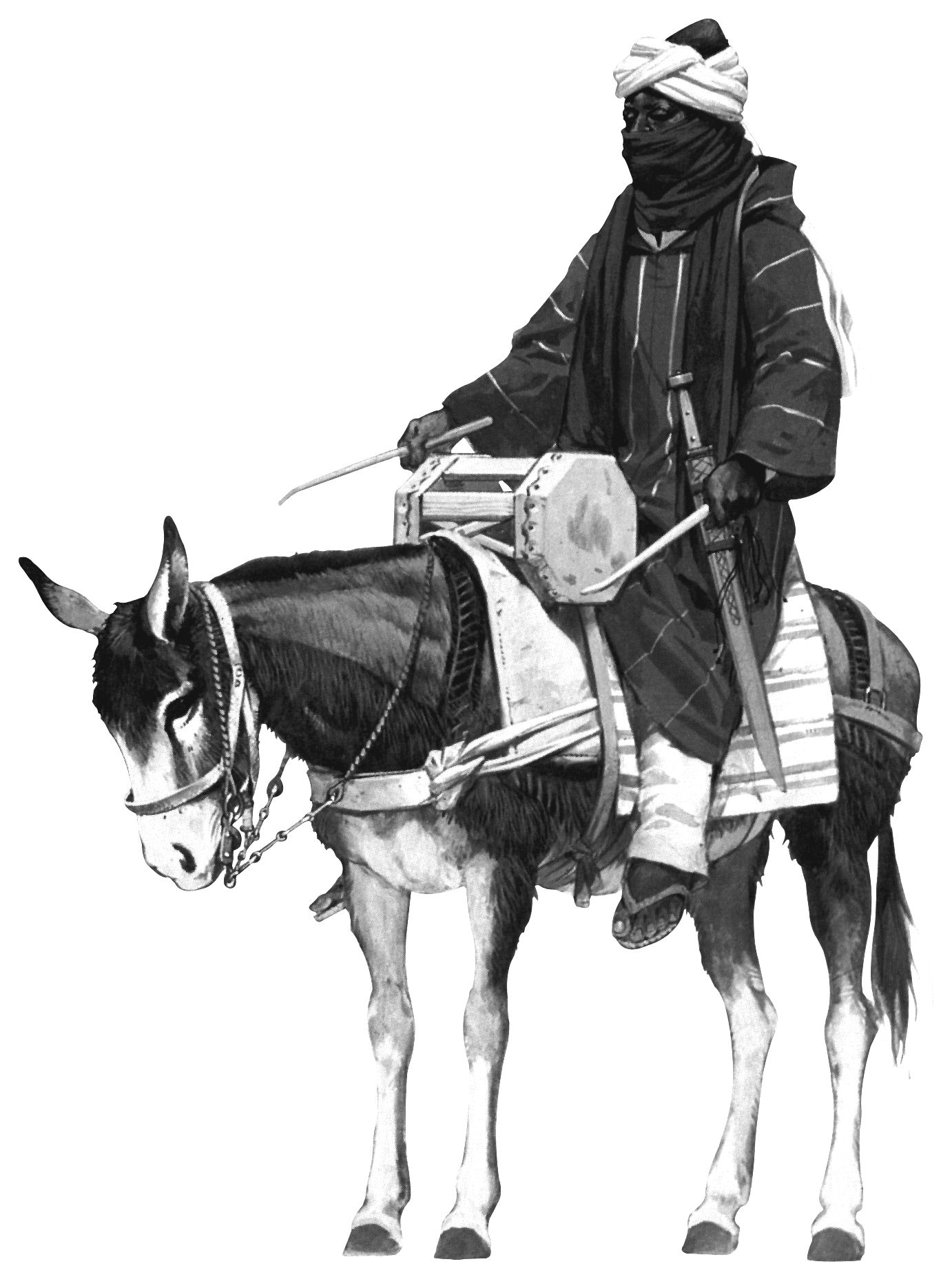
Almoravid drummer used in great number’s to demoralize the enemy.
This Yahia was a bad king, insolent, cruel, and he oppressed his people so that they could bear his yoke no longer. Neither did he make any effort to protect his subjects from their enemies, who came and spoiled the land as they pleased, and his people went to him and said, “Stand up for your people and your country, or we must find a king who will do so;” but he paid no attention to what they said.
When his people found that they could hope nothing from Yahia, certain of them went to the king of Badajoz, saying that if he would come and be their protector, they would deliver the city of Toledo into his hands. But others who dwelt in the city sent to Don Alfonso urging him to win Toledo, as he could do so, as he was no longer bound by his oath. Then both kings came, but the king of Badajoz arrived first, and the gates were opened to him.
But soon after Don Alfonso came, and the king of Badajoz, knowing that he could not withstand Alfonso, fled, and Don Alfonso followed him into his own kingdom and compelled him to submit. King Alfonso then overran the country about Toledo, despoiling it; and he did this for four years, so that he was the master of the land.
In all these battles the Cid helped his king. The son of the Cid was slain,—a young man who was well beloved, and who promised to be much like his father.
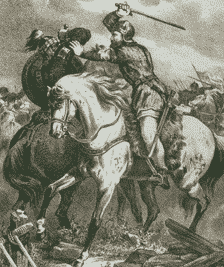 King Don Alfonso had for several years cut down the vines and trees and destroyed the harvests in the country around Toledo, so that the people were not able to store up provisions in that city; and now Alfonso made ready to lay siege to that place. When this news was known, men came from all parts of his kingdom to take part, and King Sancho Ramirez of Aragon came also with the best of his knights; there came also Germans, Italians, Frenchmen, and men from other countries, for this war against one of the chief strongholds of the Moors interested all the Christians of Europe. This was the greatest force of Christians ever gathered till that time in Spain, and it was the greatest effort ever made against the Moors.
King Don Alfonso had for several years cut down the vines and trees and destroyed the harvests in the country around Toledo, so that the people were not able to store up provisions in that city; and now Alfonso made ready to lay siege to that place. When this news was known, men came from all parts of his kingdom to take part, and King Sancho Ramirez of Aragon came also with the best of his knights; there came also Germans, Italians, Frenchmen, and men from other countries, for this war against one of the chief strongholds of the Moors interested all the Christians of Europe. This was the greatest force of Christians ever gathered till that time in Spain, and it was the greatest effort ever made against the Moors.
Of this whole mighty army the Cid was leader. In the spring the host began to march, and when they came to the ford of the Tagus, the bravest feared to pass through the swollen river, for it was a great torrent. But there was a Benedictine monk in the camp named Lesines, who, being mounted on a mule, led the way and passed safely.
Though Toledo was the chief stronghold of the Moors, and they defended it as long as they could, knowing it was the very heart of their empire, and though the flower of the soldiery of Spain and all Christendom took part in that great siege, unfortunately the details of this conflict have been forgotten, and the chroniclers omitted to tell them. But we know that there was a long siege, and that many struggles took place, and that the army of Alfonso was at last almost in despair of accomplishing their purpose. Then it is told that when Don Cabrian, the bishop of León, was engaged in prayer for the success of the Christian army, St. Isidro appeared to him, saying that in fifteen days the city should be surrendered. So it came to pass, for the gates were opened on May 25th, 1085. The first Christian banner that entered the city was that of the Cid, and the Cid was made the first Christian governor of Toledo.
Calvin Dill Wilson, The Story of the Cid: For Young People (Boston: Lee and Shepard, 1901), 113–17.
Short Stories on Honor, Chivalry, and the World of Nobility—no. 828
